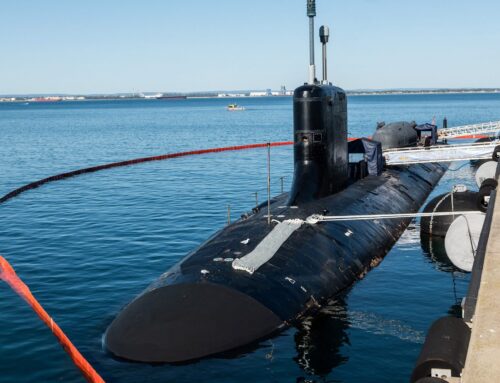An MV-22B Osprey, assigned to the Blue Knights, of Marine Medium Tiltrotor Squadron (VMM) 365, takes of from the flight deck of the amphibious assault ship USS Bataan (LHD 5). The ship is underway conducting sea trials. (U.S. Navy photo by Mass Communication Specialist 3rd Class Alan L. Robertson)
WASHINGTON — A Marine Corps investigation concluded the fatal V-22 crash in Australia last year was largely the fault of the pilots’ actions, though it praised a crewmember for his “heroic” but fatal attempt to save his fellow Marines.
The Aug. 27, 2023, crash in question took place on Melville Island and resulted in the deaths of aircraft commander Maj. Tobin Lewis, co-pilot Capt. Eleanor LeBeau and crew chief Cpl. Spencer Collart. Numerous others, whose names were redacted in the public report, were injured.
A lengthy official crash report published late Friday praised the actions of Collart, who had survived the crash but “heroically re-entered the burning cockpit of the aircraft in an attempt to rescue the trapped pilots. He perished during this effort.” Investigators said Collart displayed “extraordinary physical courage” and recommended he be posthumously recognized.
According to the report, the crew was participating in an exercise, dubbed Predator’s Run, when the pilots executed “three extreme right banks.” The first nearly caused a mid-air collision with another aircraft, and the second bank resulted in an “aerodynamic stall” as well as a corresponding warning inside the Osprey’s cockpit. After the third bank, the aircraft commander took the controls and attempted to right the Osprey, but the conditions created by the previous movements made the situation untenable.
“Given the nacelle and power settings, low altitude, weight of the aircraft and tailwind experienced, there was insufficient time and space to arrest the descent and resume flight,” according to the investigation’s report. “Consequently, the MA [mishap aircraft] crashed into the ground and burst into flames. Ultimately, based on the evidence available, the primary cause for this mishap was pilot error and complacency.”
The investigation also discovered “concerning maintenance practices” by the aircraft’s unit, VMM-363, and declared that the aircraft “should not have been” allowed to fly that day — but it states there is “no evidence” that the maintainers’ actions caused the mishap. Generally, it noted “a lackadaisical attitude across the squadron regarding certain procedures to ensure safe flight operations.”
The officer overseeing the investigation, Lt. Gen. Michael Cederholm, commander of I Marine Expeditionary Force, recommended five Marines associated with the squadron, including the commanding officer, be disciplined for their culpability in the poor maintenance practices. The names of the Marines are redacted and the report does not specify their punishments except to say they should be subject to “appropriate administrative measures.”
The report’s release comes just weeks after the US Air Force published its own investigation into a separate November 2023 fatal Osprey crash involving a special operations unit flying off the coast of Japan.
That investigation found the crash — which killed eight airmen — was mostly due to a mechanical failure, but that a combination of the crew’s in-flight decision making and the program office’s ineffective communication likely contributed to the fatal incident.











